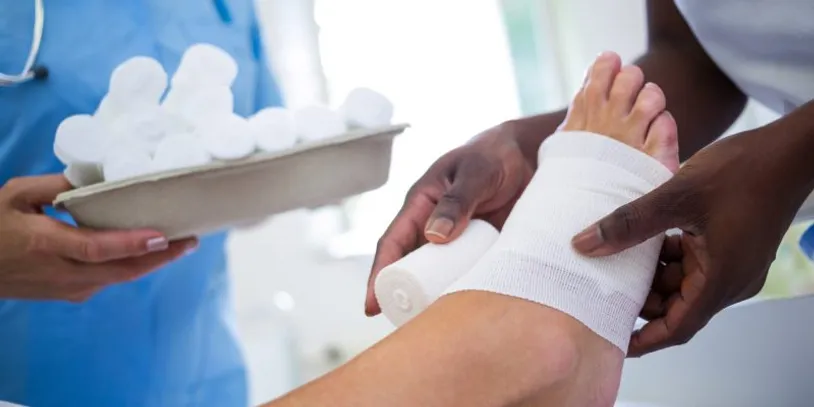Diabetic wound healing: how to heal properly & avoid amputation

Wounds on feet are a common complication of diabetes. It’s possible for those wounds to turn into an amputation if they’re not treated quickly and adequately enough.
A wound on the foot is the result of vascular or nerve damage and is usually caused by trauma or repetitive pressure from shoes, such as in rosacea or neuropathic diabetic neuropathy lesions. They’re also likely to occur in people who have poor circulation, such as those who have peripheral vascular disease (PVD) and those with diminished sensation in their toes and feet due to peripheral neuropathy or stroke.
The connection between diabetes and wounds
Diabetes is a chronic condition that causes high blood sugar levels, which can lead to other health conditions like heart disease and stroke. The connection between diabetes and wounds ties back to the importance of taking care of one’s wounds. A common symptom of diabetes is slow healing of wounds and skin infections, which means wounds can last for weeks or months if not treated properly. This is why it is recommended for diabetic patients to be seen by a wound care specialist to properly treat and heal their wounds.
What is a diabetic wound?
A diabetic wound is a wound on the body of a person with diabetes that has not healed in the way it should. This can happen for a variety of reasons but usually happens because of diabetes-related complications.
While the wounds themselves are not caused by diabetes itself, their slow healing (or lack of healing) is often prolonged and made worse by diabetes. The main symptoms are pain and redness around the wound and often have a foul odor to them.
The importance of early detection of diabetic wounds
Early detection of diabetic wounds is very important and can make a huge difference in the healing of these wounds, which can greatly improve the quality of life for the patient.
Diabetes is the most common metabolic disorder in the world. A person with diabetes has high blood sugar levels, either because they don’t produce enough insulin (Type 1), or their body’s cells don’t react to insulin properly (Type 2).
Diabetic wounds are a serious problem for people with diabetes. Nearly half of all people living with diabetes have wounds that become infected, and these infections lead to about 10% of all deaths from diabetes.
People with diabetes have an increased risk for developing many different types of chronic wounds, including foot ulcers, leg ulcers, and more. Properly treating these wounds will help prevent infection which can lead to amputation or death.
The proper treatment options for diabetic wounds
A person with diabetes is more susceptible to wounds. In the event of a wound, it is important to choose the proper treatment option.
Minor cuts and scrapes:
Clean the wound with soap and water or hydrogen peroxide, apply an antibiotic ointment, cover with a sterile bandage, and change at least twice a day.
More serious cuts and scrapes:
Clean the wound thoroughly with soap and water or hydrogen peroxide, apply an antibiotic ointment, cover with a sterile bandage, and change at least twice a day.
Deep wounds:
We strongly recommend you seek out a wound care specialist to help with deep wounds. A wound care specialist will start by cleaning the wound thoroughly with soap and water or an alcohol-based sterilizer. In some cases, stitches may be required to close the wound. If stitches are required, the wound will be cleaned again after the stitches are done. Then an enzyme-based medicine or other ointment is often applied to help prevent infection and aid the wound in healing. Lastly, a dressing will be applied to protect the wound. The frequency of the dressing needing to be changed will depend on the wound.
How to prevent diabetic wounds from happening again
Although we cannot change the past, we must make sure that we learn from it and take care of open wounds as soon as possible.
Diabetic wounds caused by high glucose levels can lead to infections and loss of blood flow. To prevent diabetic wounds from happening again in the future, check your blood sugar regularly, eat a healthy diet, stay active, lose weight if you are overweight or obese, test your blood sugar when you have symptoms or concerns about it being too high or low.
Partner with American Wound Care Centers to treat diabetic wounds
We understand how important it is to treat diabetic wounds early, and with proven treatments. Partner with an American Wound Care Center near you to provide your diabetic patients with the best wound care healing available.
